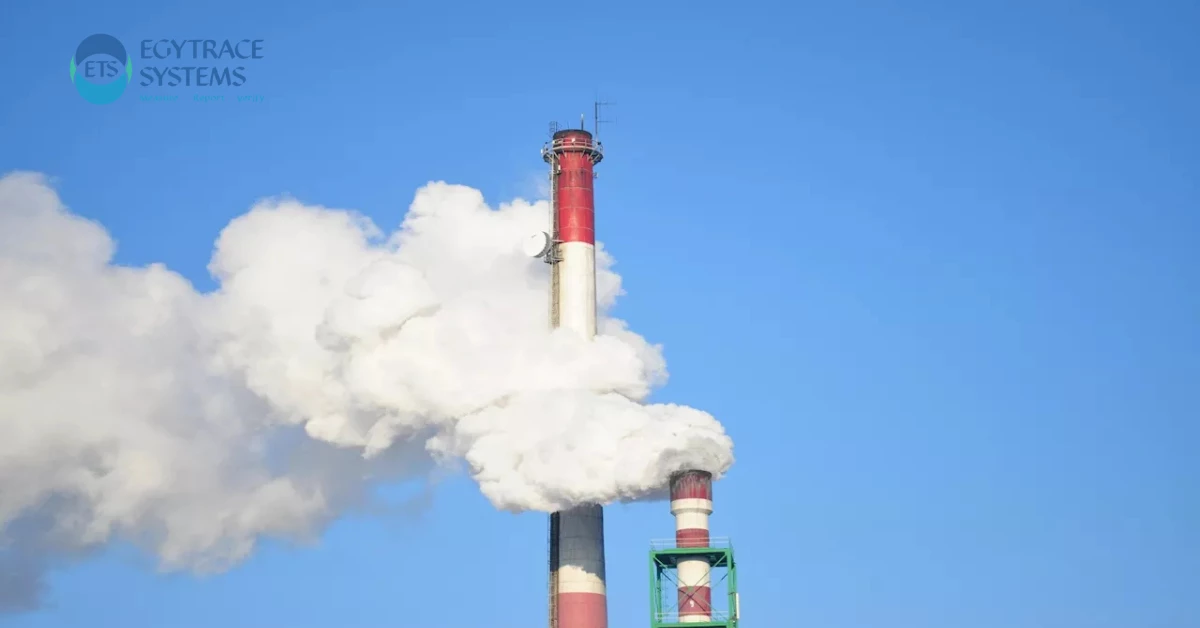The GHG Protocol
In an era where sustainability is a key priority, businesses must effectively measure and manage their greenhouse gas (GHG) emissions. The GHG Protocol stands as the global benchmark for emissions accounting, providing organizations with a structured framework to assess, report, and mitigate their environmental impact. By comprehensively understanding Scope 1, Scope 2, and Scope 3 emissions, businesses can develop effective strategies to reduce their carbon footprint and align with international climate regulations, such as the EU Carbon Tax.
At EgyTrace, we empower businesses with cutting-edge digital solutions that streamline sustainability efforts. Our expertise in EU Carbon Tax compliance and automated MRV systems ensures seamless emissions tracking and reporting. This article explores the GHG Protocol, its significance, and its role in advancing corporate sustainability.
What is the GHG Protocol?
The GHG Protocol is the world’s most widely adopted framework for measuring and managing greenhouse gas emissions. Developed by the World Resources Institute (WRI) and the World Business Council for Sustainable Development (WBCSD), it establishes a standardized methodology for organizations across industries to track and mitigate their carbon emissions effectively.
Key Advantages of the GHG Protocol:
- Provides a standardized and transparent emissions accounting approach
- Helps businesses identify major emission sources
- Supports compliance with global sustainability regulations
- Enhances corporate accountability and ESG reporting
- Facilitates effective carbon reduction strategies
Scope 1, Scope 2, and Scope 3 Emissions Explained
One of the fundamental principles of the GHG Protocol is the classification of emissions into three distinct scopes. These categories help organizations track and manage their emissions more efficiently.
Scope 1 Emissions: Direct Operational Emissions
Scope 1 emissions refer to direct emissions from owned or controlled sources. These include:
- On-site fuel combustion in boilers, furnaces, and industrial processes
- Emissions from company-owned or leased vehicles
- Fugitive emissions from refrigerants and other industrial gases
Scope 2 Emissions: Indirect Energy-Related Emissions
Scope 2 emissions arise from the purchase of electricity, steam, heating, or cooling that a company consumes but does not generate. These emissions are indirect but still contribute significantly to an organization’s overall carbon footprint. Reducing Scope 2 emissions typically involves transitioning to renewable energy sources and enhancing energy efficiency.
Scope 3 Emissions: Value Chain Emissions
Scope 3 emissions encompass indirect emissions occurring outside the organization’s direct operations, making them the most complex to track and mitigate. Examples include:
- Emissions from supplier operations (purchased goods and services)
- Employee commuting and business travel
- Waste disposal and logistics
- End-of-life product emissions
Managing Scope 3 emissions requires collaboration across the value chain and the implementation of sustainable sourcing and logistics strategies.
The Business Case for Implementing the GHG Protocol
With the tightening of global carbon regulations, including the EU Carbon Border Adjustment Mechanism (CBAM), businesses must integrate emissions accounting into their corporate sustainability frameworks. The GHG Protocol enables organizations to:
- Identify opportunities for emissions reduction
- Strengthen sustainability reporting and ESG performance
- Improve corporate reputation and stakeholder trust
- Achieve compliance with international carbon regulations
How EgyTrace Supports Businesses in Carbon Management
At EgyTrace, we provide businesses with state-of-the-art digital solutions to simplify carbon accounting and ensure compliance with global sustainability standards. Our automated MRV (Monitoring, Reporting, and Verification) system delivers precise emissions tracking and actionable insights.
Our Core Digital Sustainability Solutions:
- Automated emissions tracking and real-time reporting
- Full compliance with EU Carbon Tax requirements
- Advanced data analytics for emissions reduction planning
- Seamless integration with corporate ESG goals
Conclusion
Implementing the GHG Protocol is crucial for businesses aiming to manage their carbon footprint and achieve sustainability targets. By effectively addressing Scope 1, Scope 2, and Scope 3 emissions, organizations can enhance their environmental performance and stay ahead in a rapidly evolving regulatory landscape.
Partnering with EgyTrace ensures that your business leverages cutting-edge technology for accurate emissions reporting, regulatory compliance, and long-term sustainability success.
Take a step towards a greener future—Contact EgyTrace today to optimize your carbon management strategy.

